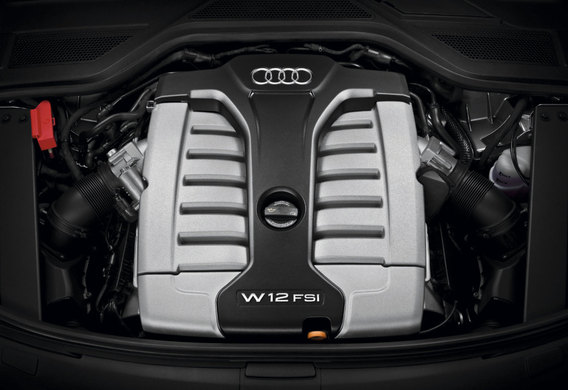
The need to fit into the narrow space of already existing models with a large number of cylinders has made engineers of Volkswagen to once again review the experience of the engine built by the European automotive industry in the twentieth century. The result has surpassed all expectations-the engines of the runaway build were incredibly compact. History of creation
History of creation
Back at the beginning of the 20th century, Lancia planned to reduce the size of the V-shaped engines, installed on many cars of that time. A more compact powertrain would reduce the size of the car and its mass. Consequently, its value would be reduced and its popularity on the market would have increased. Lancia engineers succeeded in creating a V-shaped engine with a record low angle of cylinders-no more than 10-20 degrees.
In 1991, Volkswagen introduced a new scheme for the location of the cylinder, which was a mixed one
It was not widely distributed, but it was the one that pushed Volkswagen to create a fundamentally new engine.
VR engine and its features
In 1991, the German company introduced a new arrangement of cylinder layout-quite displaced. The company needed a compact but powerful six-cylinder engine to install on the small models Audi, Volkswagen and Seat: the traditional V6 in them simply did not party.
The new engine has been given a VR abbreviation for "v-row". This engine was a mixture of a V-shaped unit with a very small cylinder and a typical in-use engine. Its 6 cylinders are located V-figuratively at an angle of 15 degrees, pistons located in the block in the chess order. The compactness allows to cover the block of cylinders as a whole with one common head.
Volkswagen W12 engine
After a while, the engineers of Volkswagen came up with the idea: "What if we put the two VR engines together at a 72-degree angle and bound them with a common shaft?" The result was a monstrous 12-cylinder monster. The most surprising thing is that all of its power has been placed in a cylinder block that is comparable to a conventional V6 engine. It was first presented to the public in 2001 at a concept car with a simple and uneasy name-W12. The 6-liter engine produced an engine of about 600 hp.
The only ever issued car with a similar engine remains a Bugatti
Shortly before, he was tested for strength in a 24-hour test run. The Volkswagen W12 Coupe was more than 7,000 km with an average speed of almost 300 km/h. In the future, such engines were installed on Volkswagen's luxury serial cars. It turned out that the number of cylinders within the framework of the linkage could change, both large and smaller. The W8 engine appears, followed by an incredible W16, with a Bugatti Veyron hypercar.
At the same time, the very essence of the engine remains unchanged-the same VR4/6/8. The difference is that the engines are like "spurts" inside the common block. The pistons are set at an angle and are associated with one knee.
Despite the originality of the idea gradually because of the complexity of production of Volkswagen, the production of engines of this type has been abandoned, and today only the Bugatti is left on the conveyor. Maybe it's not the time of the engine.
Advantus and Minus of the W-shaped Motor
The main advantage of the W12 engine before the similar volume is the volume of the traditional V-sample for 12 cylinders-compactness. The funny thing is, it's even a V8 engine. Significant savings of the subspace of the vehicle makes it possible to free space for the installation of various additional equipment, be it hydro-amps, compressors or turbines. The power and torque of such engine are also higher than those of the classical V-type engines. And this is not a reduction in the cost of production, by saving the materials necessary to create a small engine.
The denser arrangement of cylinders requires a serious upgrade of the cooling system, and each cylinder has to be individually cooled
There's a flaw in it too. The denser arrangement of cylinders requires a serious upgrade of the refrigeration system. The result is that each cylinder has to be individually cooled in such engines. There are also some problems with balancing the design, as the vibrations in it are off-scale. This is a problem for the installation of balancing gross and the use of hydro-anvil.







